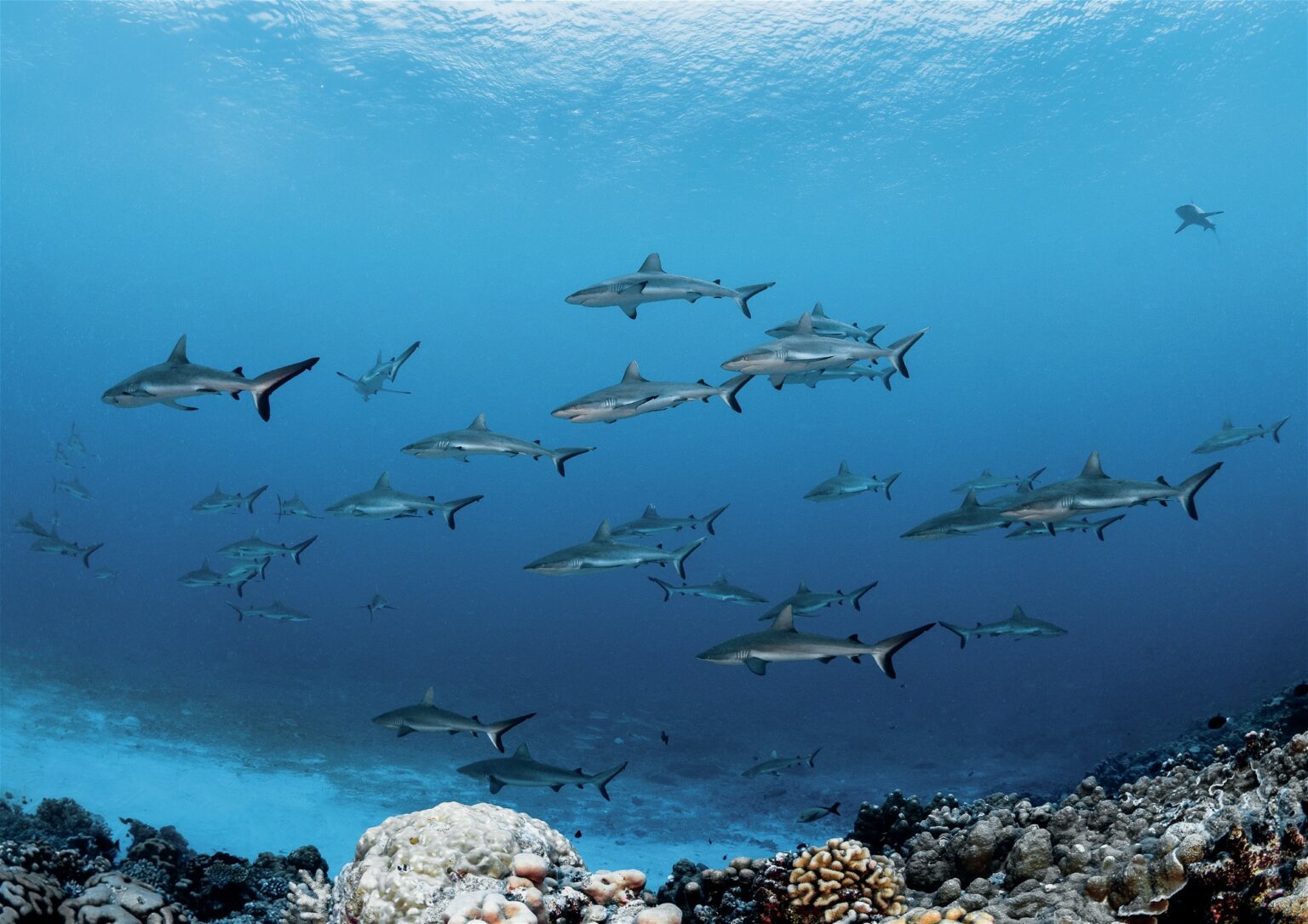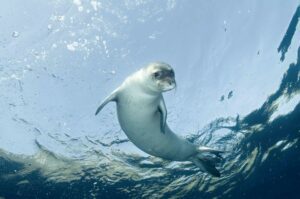Deborah Dickson-Smith is left speechless by the marine life encounters she experiences in French Polynesia.
Photographs by Grégory Lecoeur, Jim Winter, Bernard Beaussier, Alexandre Voyer, Jayne Jenkins and Frédérique Legrand.
First Impressions: The Spectacular Fakarava's North Pass
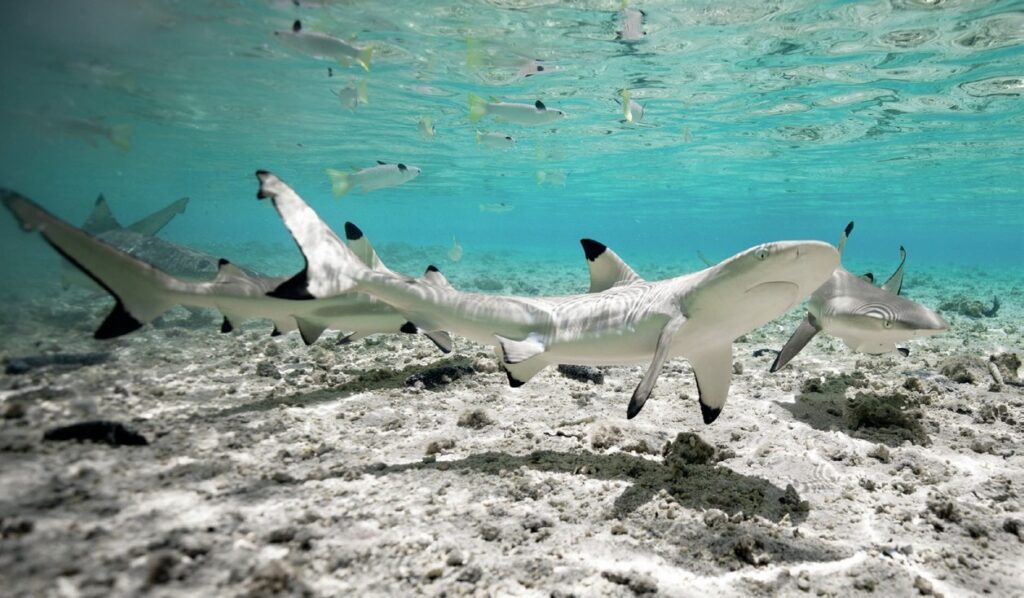
As soon as I take my first plunge at Fakarava’s North Pass, I understand what all the fuss is about. I’m greeted by a display of marine life unlike any I’ve seen before. In fact, even with the amazing visibility we experience on this incoming tide, I can barely see the reef below because there are so many fish forming a cloud over it. And in the blue, a wall of grey reef sharks, numbering perhaps in the hundreds.
Did you know?
Humpback whale season is from August to October, and you can see hammerhead sharks from February to March. The mating season of the grouper is from mid-June to the beginning of July, and paddletail perch aggregate to breed before new moon from November to February.
Fakarava: A UNESCO Biosphere Reserve
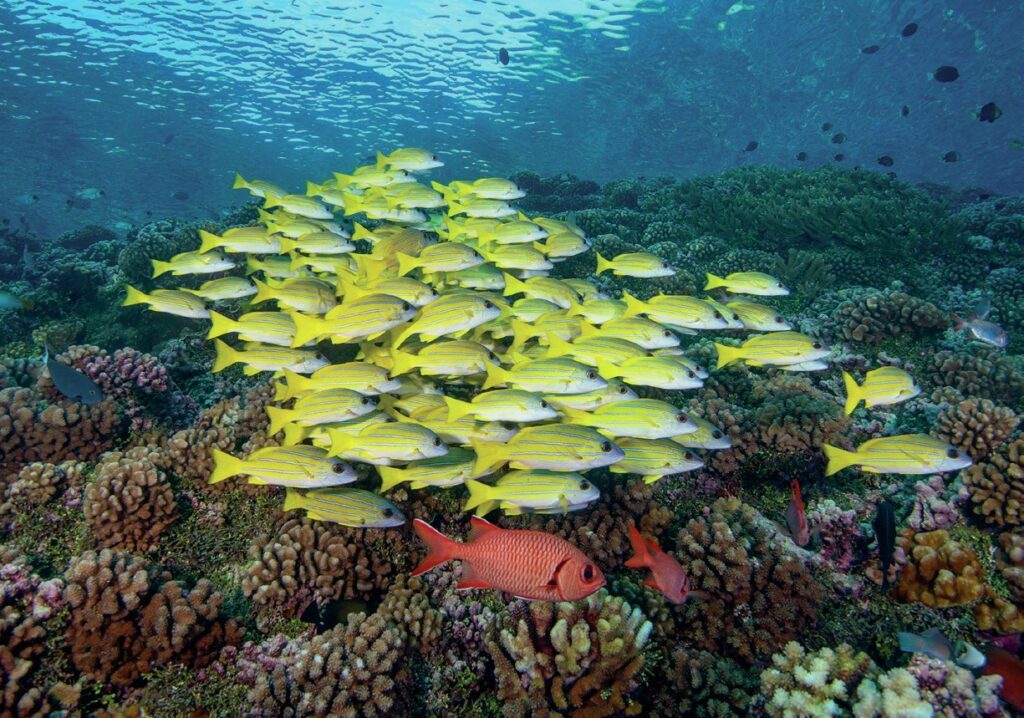
Fakarava is part of the Tuamotu Archipelago in French Polynesia, and it is fast becoming one of the most-popular dive destinations in the South Pacific. This atoll has two channels on the opposite sides of its inner lagoon – the Garuae Pass in the north and the Tumakohua Pass in the south. The plankton growing inside the lagoon escapes by these natural gates through the reef and attracts pelagic species in numbers. Serious numbers.
These channels and their abundant shark populations are what make the Tuamotu Islands famous worldwide. Due to its exceptional ecosystem, Fakarava Atoll and its neighbouring islets are a registered UNESCO biosphere reserve.
Beach huts
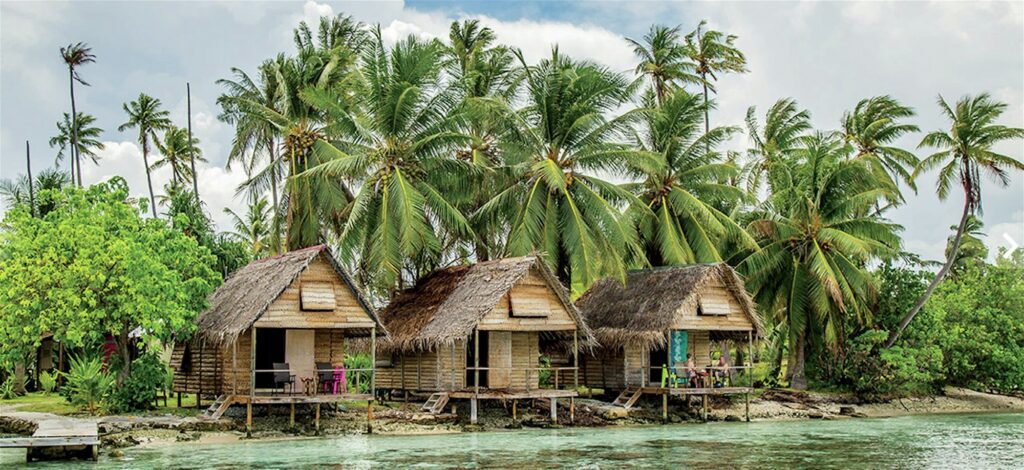
Accommodations and Dive Centres in Fakarava
The majority of Fakarava’s dive centres are in the north, not far from the airport and there are several resorts and guest houses to choose from. Here, beginners can enjoy a discovery dive in the lagoon while experienced divers can enjoy the sporting conditions of the Garuae Pass. Even if dive centres only go at slack tides, the currents can be strong, so you need to know how to give an efficient fin kick and keep a close eye on your dive guide.
Polynesian culture
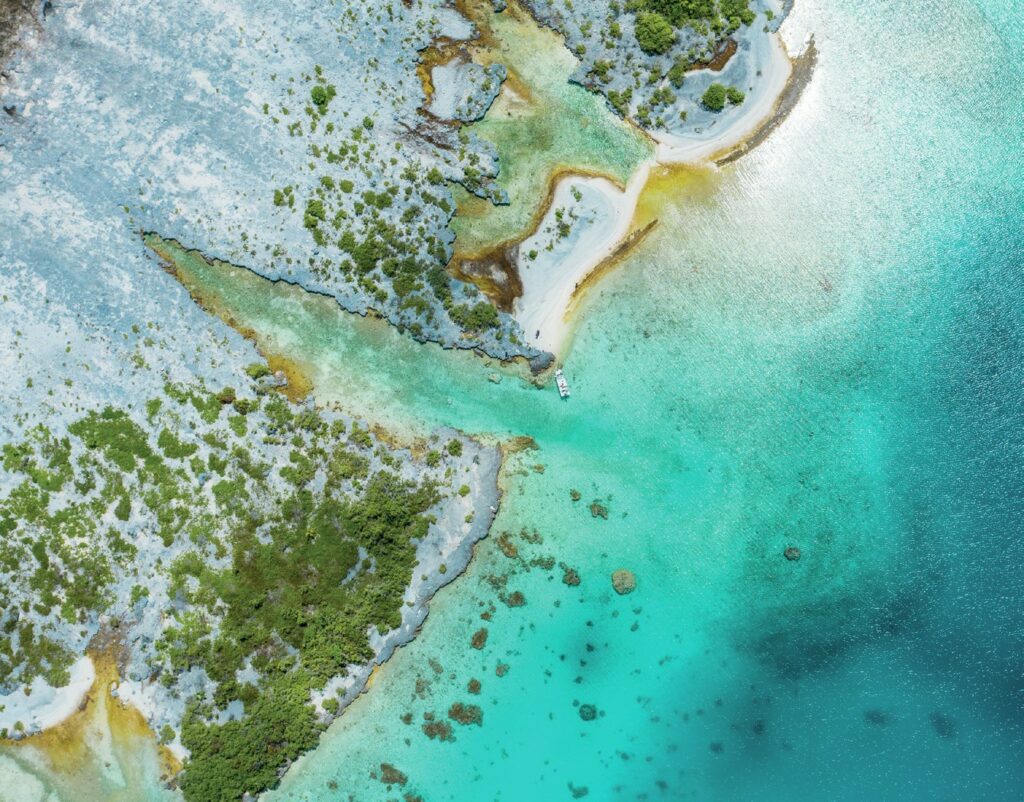
Immerse in Polynesian Culture with Fakarava Tours
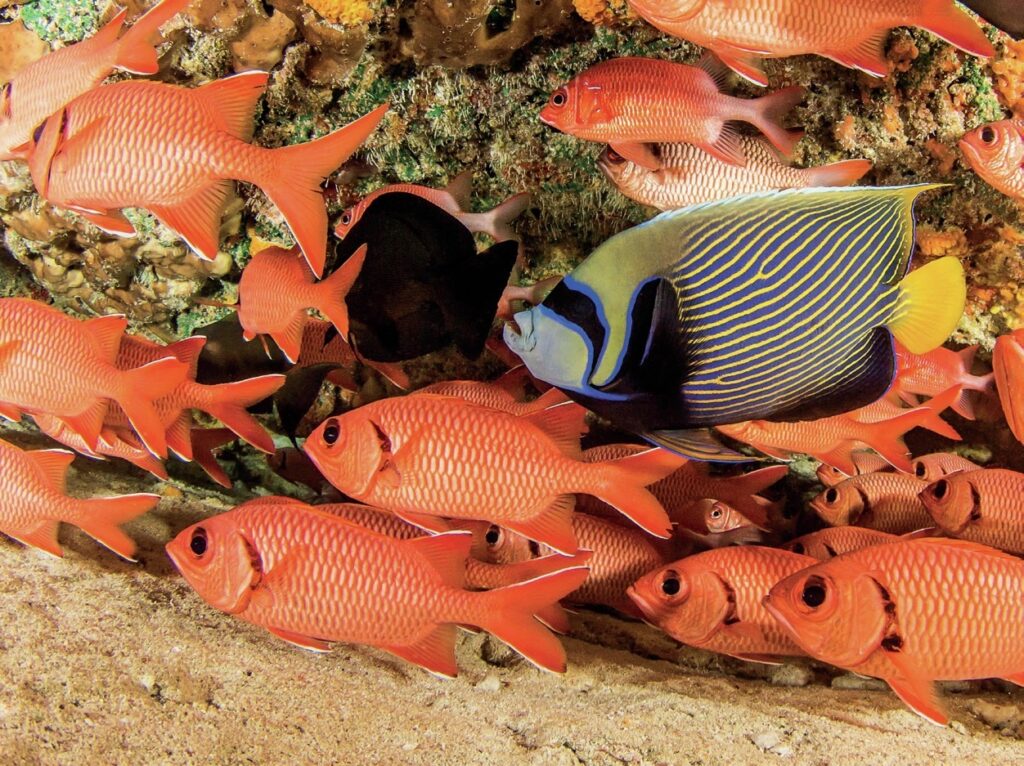
For a private discovery of Polynesian culture in a small group, from ancient religion to today’s environmental challenges, ask for Enoha of Fakarava Tours. He took me all around the atoll on my non-dive day, from the coconut oil shop, where he explained the medicinal properties of the local flora, to the northernmost tip of the atoll to visit an ancient Marae (burial ground). Covering with passion and generosity topics from the true meaning of Ia Orana (hello in Tahitian) to how people of the Tuamotu make the most of their limited natural resources.
The Thrill of Diving in Garuae Pass
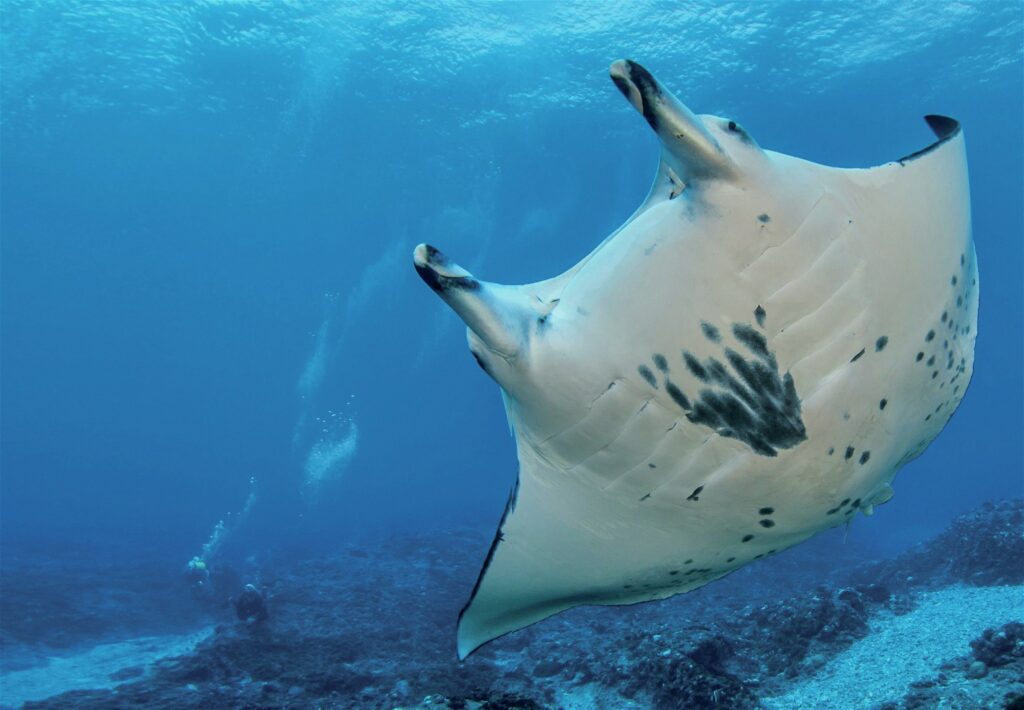
The visibility (and stronger current) in the channel is best on the incoming tide each morning, and this is when the shark action happens so you can expect an exciting two dives each morning. While it’s only one channel, it is very wide and there are several gullies you can travel through – at high speed – so it’s important to listen closely to the dive brief and stay close to your group so that everyone is picked up at the same spot inside the lagoon at the end of the dive. But boy, it’s a fun ride!
On our first dive at Garuae Pass, before drifting through a gully called Alibaba, we hang on to the reef watching the grey reef sharks in the blue and the millions of fish that surround us.
Did you know?
The south pass of Fakarava has been protected since 2008 and is now home to the highest concentration of Grey reef sharks in the world with an estimated 700 sharks comprising the single school that inhabits the area. This is also one of the only reefs where sharks are fully protected and can be found in anything like their historical numbers.
Diverse Marine Life in the Pacific
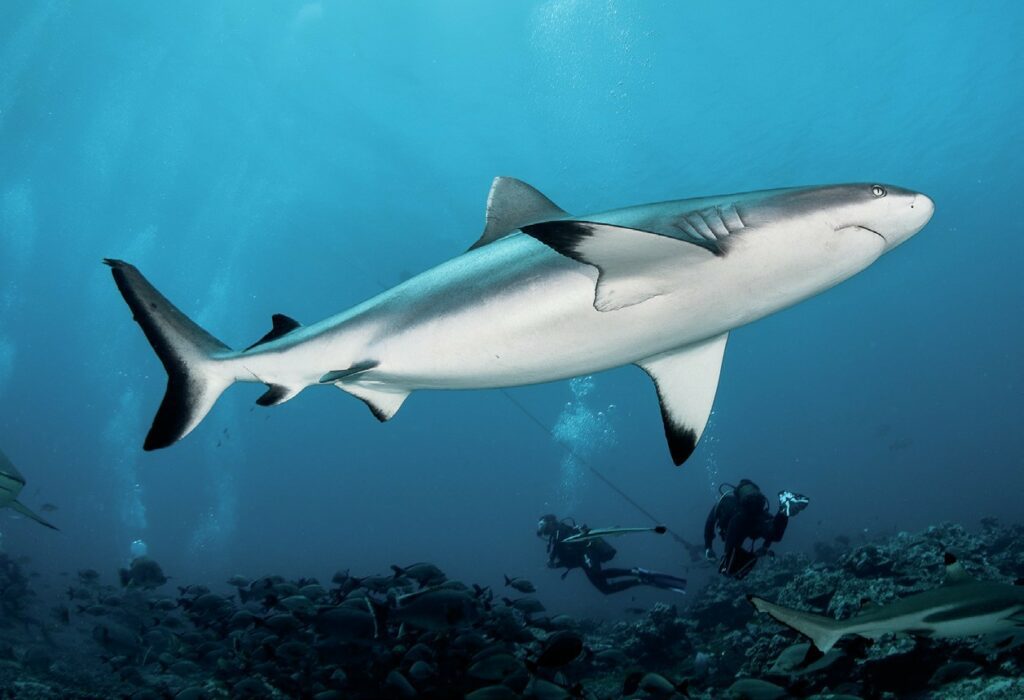
In terms of biodiversity, it’s like many dives I’ve done before in other parts of the Pacific – there’s just more of them. On dives I’ve done on the Great Barrier Reef out from Cairns for example, you will likely see one giant Napoleon (or Maori) wrasse. On this dive I counted at least six adults with their magnificent, tattooed cheeks.
Trumpetfish, which you would normally expect to see one or two of on a dive – I stopped counting them, there were dozens. And groups of big eyes, which I love watching under the overhangs and wide table corals in their normal groups of a dozen or so, in the gully called Alibaba, there are thousands.
The Second Dive: Exploring Le Twins
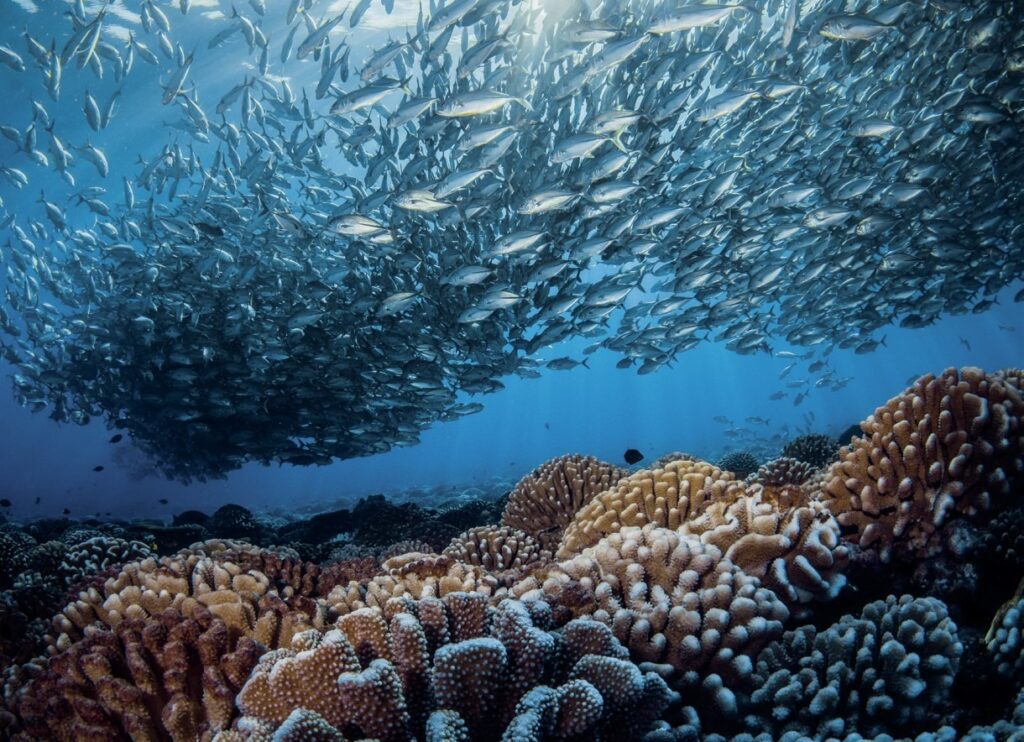
Our second dive, Le Twins, (same channel) is down a different gully. A similar dive, but this time stopping at a few overhangs to observe sleeping nurse sharks and whitetip reef sharks, accompanied by large surgeons (and more big eyes).
Did you know?
You can see the grey sharks yearround. However, you will have sunnier weather if you go from April to November. Rainy season is November to March. The water temperature is between 26- 28°C all year-round so most people dive in a 3mm shorty.
The Outgoing Tide: A Different Dive Experience
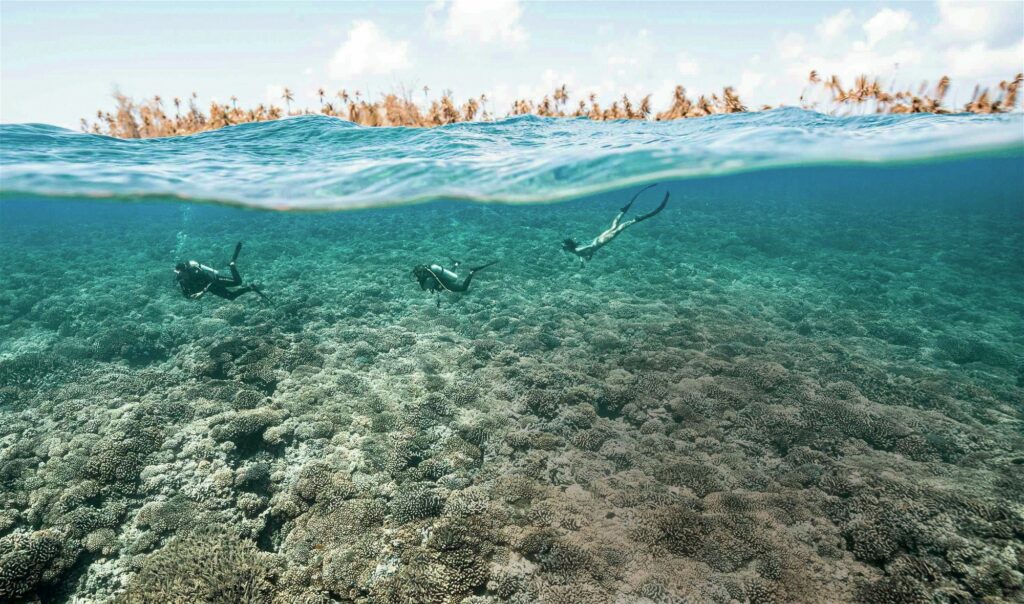
In the afternoon we return, this time to dive on the outgoing tide. I ask if there will still be sharks and am told ‘probably not, but maybe mantas’. The French seem to understate everything.
We stay on the outer reef without entering the channel. This is a much easier dive, and a few beginner divers join us for this. Above the reef there are large schools of paddle tail and red snapper, goatfish, surgeons, unicornfish, butterflyfish and barracuda. Oh, and plenty of grey reef sharks. Not to mention encounters with the largest stonefish I’ve ever seen, a leafy scorpionfish and a flowery flounder.
But the highlight of this dive are the mantas. Two beauties dancing above us and as we crouch down on the reef to watch them, they come so close to me I have to duck to avoid contact.
For more information about diving Fakarava in French Polynesia, contact the team of experts at Diveplanit Travel.
Phone: 1800 607 913
Email: enquire@diveplanit.com
The Magic of Diving in French Polynesia
This was truly one of the most magical dive days in my life. I will be returning very soon.
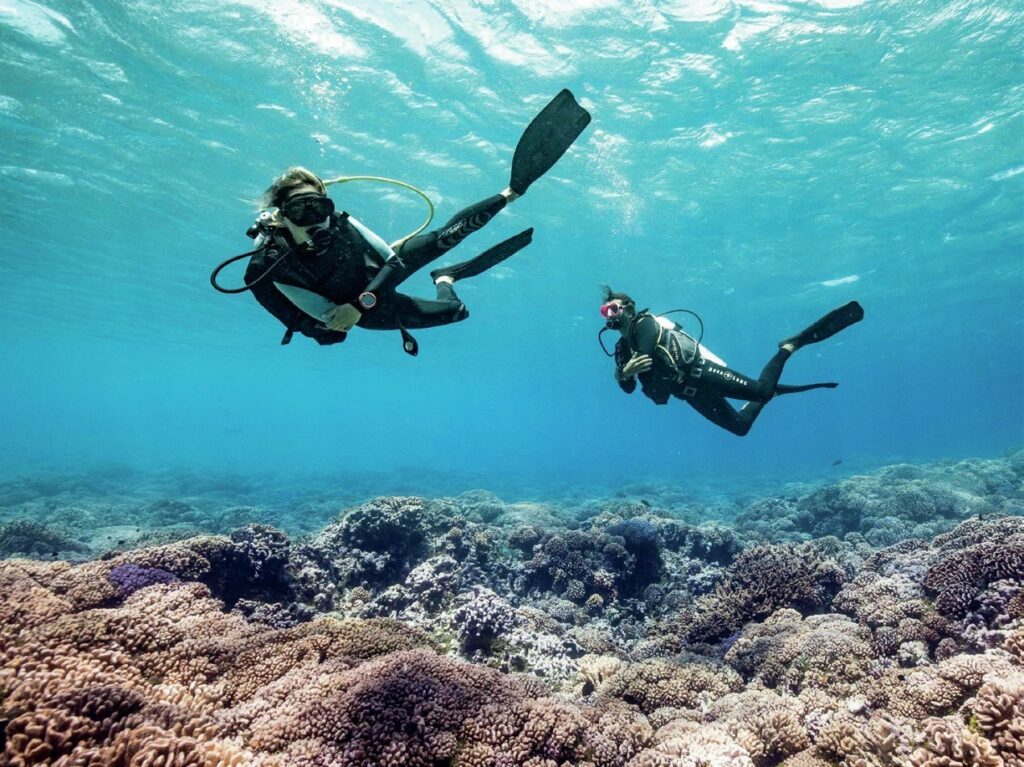
Who to dive with
I dived with O2 Fakarava, a lovely dive centre in the middle of a coconut grove. It only takes 20 minutes on their rigid inflatable boat to go to Garuae Pass. They also go to the south pass in 90 minutes several times per week.
This article was originally published in Scuba Diver ANZ #55.
Subscribe digitally and read more great stories like this from anywhere in the world in a mobile-friendly format. Link to the article
